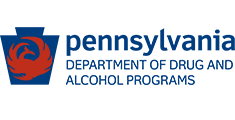The signs, symptoms, and effects of synthetic marijuana abuse can be different for every person impacted. Learning about synthetic marijuana addiction is one of the first steps towards getting better.
Understanding Synthetic Marijuana Abuse
Learn about synthetic marijuana abuse
Synthetic marijuana, which is often referred to as spice or K2, is a potent drug made from shredded plant material and a number of psychoactive chemical additives. When ingested, synthetic marijuana produces effects that mimic those of natural marijuana, including mood elevation, changes to one’s perceptions, and a sense of relaxation.
Spice was originally marketed as a natural and safe alternative to marijuana, but soon demonstrated itself to be anything but. Some people have suffered from extreme paranoia, anxiety, and hallucinations after taking the drug, and a few have even experienced rapid heart rate, confusion, nausea, elevated blood pressure, and heart attacks. However, the risk of these adverse side effects is not the only danger of spice use. Because synthetic marijuana manufacturers are constantly trying to stay ahead of attempts by the Drug Enforcement Administration to regulate the drug, they frequently alter the formulation of batches of synthetic marijuana, experimenting with new and different combinations of psychoactive chemicals.
As a result, a user of synthetic marijuana can never be sure of the effect that a particular batch of spice will have on him or her. Furthermore, because synthetic marijuana is a relatively new drug, its long-term effects are not well known. Thankfully, there are effective synthetic marijuana treatments available at comprehensive substance use treatment centers for people who find themselves struggling to overcome an addiction to this dangerous new drug.
Statistics
Synthetic marijuana abuse statistics
A 2012 report by the Drug Abuse Warning Network (DAWN) found that synthetic marijuana was linked to more than 11,400 emergency room visits in 2010. Of these emergency room visits, more than three-quarters were men and three-quarters involved people between the ages of 12 and 29. Among young people, synthetic marijuana is second in popularity only to natural marijuana. As further evidence of the danger and rapid spread of the drug, poison control centers have reported that midway through 2015, they had already received nearly 4,400 reports of people suffering from spice’s negative effects. This number is a sharp rise from the 3,700 synthetic marijuana cases tallied in the entirety of 2014. If this trend continues, 2015 may see over 8,000 poison control calls related to synthetic marijuana use.
Causes and Risk Factors
Causes and risk factors for synthetic marijuana abuse
Although synthetic marijuana is a relatively new drug, there is extensive research on the risk factors for substance use disorders involving cannabinoids, which is the family of drugs to which both natural marijuana and synthetic marijuana belong. These risk factors for cannabinoid abuse include:
Genetic: Heritability plays a strong role in determining a person’s risk of abusing synthetic marijuana. Generally speaking, a person born to parents who are predisposed to synthetic marijuana abuse will also be at a higher risk of abusing synthetic marijuana.
Environmental: In addition to genetic factors, one’s environment can play a strong role in determining his or her risk of abusing synthetic marijuana. Environmental risk factors include poor academic performance, tobacco use, instability or abuse in one’s family, a family history of substance use disorder, and low socioeconomic status. Furthermore, easy access to spice can also increase a person’s chance of developing a synthetic marijuana use disorder.
Risk Factors:
- Family history of substance use disorder
- Personal history of substance use disorder or conduct problems
- Instability or abuse in one’s family
- Ready access to synthetic marijuana
- Poor academic performance
- Low socioeconomic status
- Having friends or family members who use spice
Signs and Symptoms
Signs and symptoms of synthetic marijuana abuse
Synthetic marijuana is a relatively new drug, but because it is classified as a cannabinoid, it often has similar effects on a person as other cannabinoids like natural marijuana. However, because the chemical composition of synthetic marijuana is constantly changing, it can be difficult to predict how a particular batch of synthetic marijuana will affect a person. That being said, the signs and symptoms below represent the most common effects of the drug and can be a starting point for recognizing a potential synthetic marijuana use disorder in oneself or a loved one:
Behavioral symptoms:
- Exceeding one’s intended amount or frequency of synthetic marijuana use
- Using in situations where doing so is dangerous (for example, while driving)
- Inability to reduce one’s use
- Spending excessive time and energy obtaining, using, and recovering from synthetic marijuana use
- Not keeping up with responsibilities at home or work because of use
- Continuing to use despite being aware of significant physical or psychological problems that are related to use of the drug
Physical symptoms:
- Red eyes
- Increased appetite (sometimes referred to as “the munchies”)
- Dry mouth
- Rapid heartbeat
- Needing increasing amounts of synthetic marijuana over time in order to achieve a high
- Experiencing strong symptoms of discomfort during attempts to abstain from use
Cognitive symptoms:
- Feeling cravings or intense desire for the drug
- Changes in one’s perceptions
- Problems with memory or thinking
Psychosocial symptoms:
- Loss of motivation
- Experiencing repeated interpersonal difficulties and conflict as a result of synthetic marijuana use
Effects
Effects of synthetic marijuana abuse
Though it is a new drug, synthetic marijuana has already proven itself to be potentially dangerous. Some of the adverse consequences of spice abuse may include:
- Apathy or loss of motivation
- Onset or worsening of mental health symptoms
- Polysubstance use, addiction, or chemical dependency
- Poor performance at work
- Potential job loss and subsequent financial difficulties
- Cognitive impairment
- Social withdrawal and isolation
- Conflict in relationships
- Injury as a result of accident
- Respiratory illness
- Organ damage
- Suicide attempts
Co-Occurring Disorders
Synthetic marijuana abuse and co-occurring disorders
It is not uncommon for a person with a synthetic marijuana use disorder to also meet criteria for other mental health disorders. These co-occurring mental health disorders may include:
- Other substance use disorders
- Depressive disorders
- Anxiety disorders
- Conduct disorder
- Bipolar disorder
- Posttraumatic stress disorder (PTSD)
- Attention-deficit/hyperactivity disorder (ADHD)
Withdrawal and Overdose
Effects of synthetic marijuana withdrawal and overdose
Effects of synthetic marijuana withdrawal: If a person has engaged in heavy, long-term use of spice, that person may experience a number of very unpleasant symptoms, known as withdrawal, should he or she attempt to stop using the drug. These symptoms can include:
- Insomnia
- Disturbing dreams
- Nervousness
- Anxiety
- Irritability or anger
- Aggression
- Restlessness
- Depressed mood
- Abdominal pain
- Shaking or tremors
- Fever or chills
- Sweating
- Headache
Effects of synthetic marijuana overdose: Although it is generally accepted that one cannot overdose on natural marijuana, certain formulations of synthetic marijuana may contain chemical additives not found in natural marijuana. Although researchers are still studying the effects of synthetic marijuana, these additives may cause severe negative symptoms in some people. People who have sought help from poison control centers as a result of synthetic marijuana ingestion have experienced the following symptoms:
- Rapid heart rate
- Vomiting
- Agitation
- Confusion
- Hallucination
- Elevated blood pressure
- Reduced blood flow to the heart
- Heart attack







